For this episode of which running shoe is right for you we are pitting two of the biggest names in the shoe world against each other: Adidas vs ASICS Running Shoes. Let’s find out what features set them apart and compare models in different categories to help you decide.
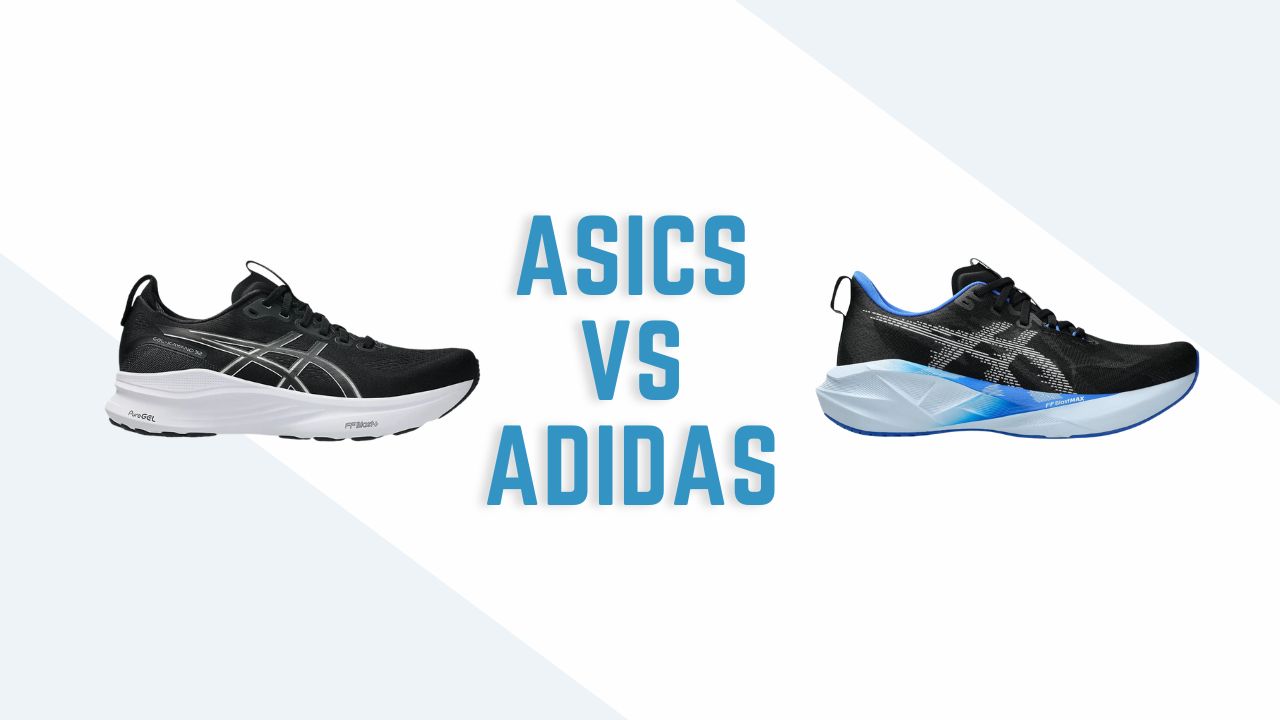
ASICS is well known for their sponsorship of many large marathons and long partnerships with athletes like Deena Kastor. Meanwhile, Adidas you might first think of for soccer. But they are coming on strong in the market now (you may have just seen that Boston marathon winner in Adidas!)
Both brands have things people love and things people dislike. I’m going to be looking specifically at the variety of running shoes and helping you to see similarities and differences to decide what’s a good fit.
Luckily in my 27,000+ miles of running I’ve slipped on a lot of pairs from both brands. So hopefully I can give you a good breakdown of the fit, feel and function.
When it comes to these two brands, I think it’s key to know that both have continued to change an adapt. So if you’ve tried one previously without luck, you might need to be willing to test a new model.
Main Differences ASICS vs Adidas
Adidas and Asics have a similar range of shoes, but a very different fit and feel. Both brands have been making massive strides recently in the carbon fiber shoe area, which is trickling down in the cushion and great feel of all their running shoes.
I break down the differences in more detail below, but here’s a quick overview:
Adidas Running Shoes
- Shoes tend to run true to size, not wide
- Huge line up of shoes can be confusing
- Frequently able to find good sales (hey that matters!)
- Shoes for a wide variety of sports
- Very well known for casual shoes and athletic wear
ASICS Running Shoes
- More narrow fit, especially in the heel and midsole
- Famous for its GEL technology, which provides shock absorption
- Seems focused on shoes to prevent injury
- Designs a variety of shoes for many different sports
I’ve worn both brands and will add some personal thoughts, along with links to detailed reviews.
If you’re looking for other comparisons, checkout ASICS Vs Mizuno or Hoka vs On Cloud or Nike Vs Adidas.
ASICS Vs Adidas Running Shoe Models
Now that you know more about each brand, let’s look at their top models in each of the main categories. There’s no winner declared here because all are great shoes, it’s just about which one is best for your foot.
Did you notice I even said the brands in reverse order this time…seriously no favorites, I have run in both brands many different times over the years.
Stability Running Shoe
Oddly from both brands this is one of the most affordable running shoes at under $100. As a reminder these shoes tend to be a little stiffer, so if you like the price know they may not feel as amazing on long runs.
👉ASICS GEL Kayano
The ASICS GEL Kayano was first released in 1993 and due to its popularity is now on the 32nd edition! This shoe was introduced as one of their first for the “high mileage runner” and clearly has a loyal following for a stability shoe.
It’s more cushioned than most stability shoes and thus has remained a favorite of many runners for a very long time. To be clear, it’s not that plush max cushion feel, but a moderate underfoot feel that allows for pronation correction.
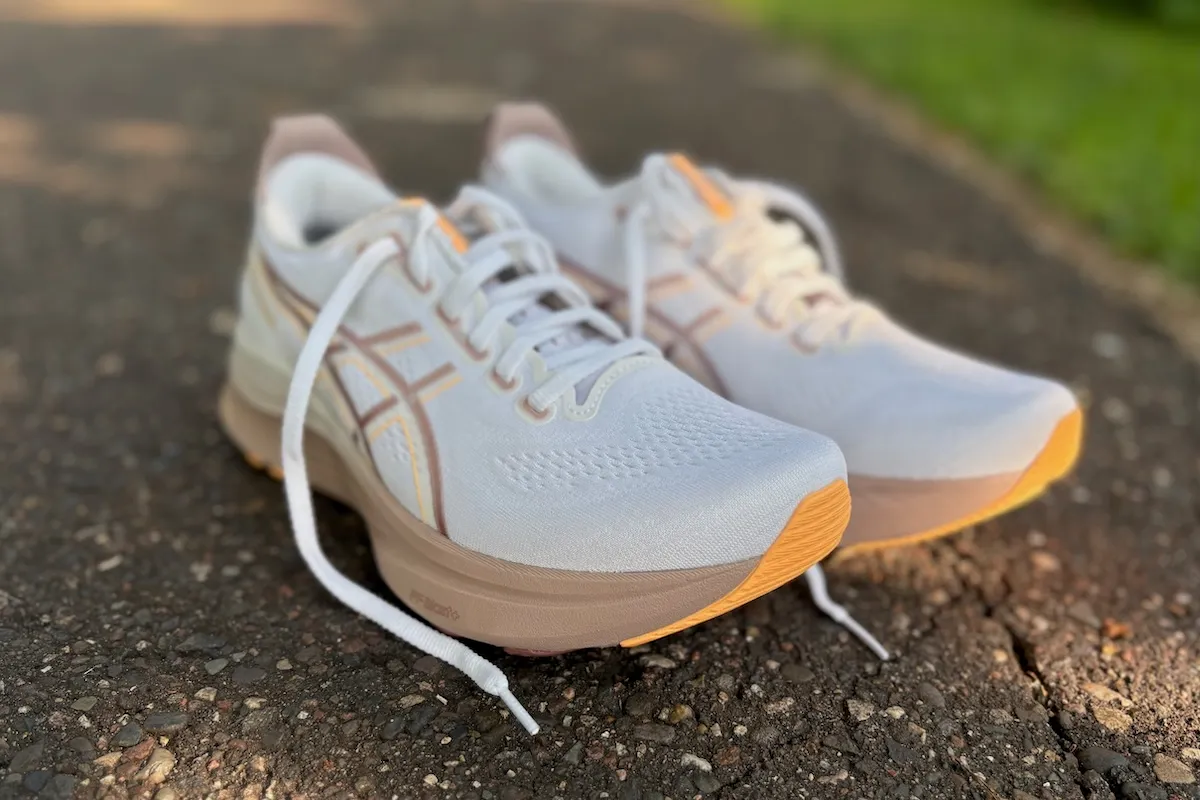
The fit is in line with most shoes, but you will notice a bit more of a heel lock. This is ideal for runners who have Achilles Pain or ankle pain while running, along with overpronation, because it will reduce the stress on those areas.
- Weight: 10.7 oz Men’s, 9.1 oz Women’s
- Stack Height: 40 mm
- Heel Drop: 8 mm
- Available in nine colors
- Available in wide and narrow
- Available at Asics.com for $165.00
- Read our full review of the Asics Gel-Kayano 32 here >>
👉Adidas Duramo SL 2
Utilizing their stable frame, you’ll find your foot less likely to fall inward. While you will still enjoy the benefit of the full length LIGHTMOTION foam midsole to provide both responsiveness and cushion.
This is not a plush cushion due to the nature of a stability shoe, but it’s comfortable.
It has a lightweight upper mesh that has just enough padding to provide a comfortable ride without your feet overheating.
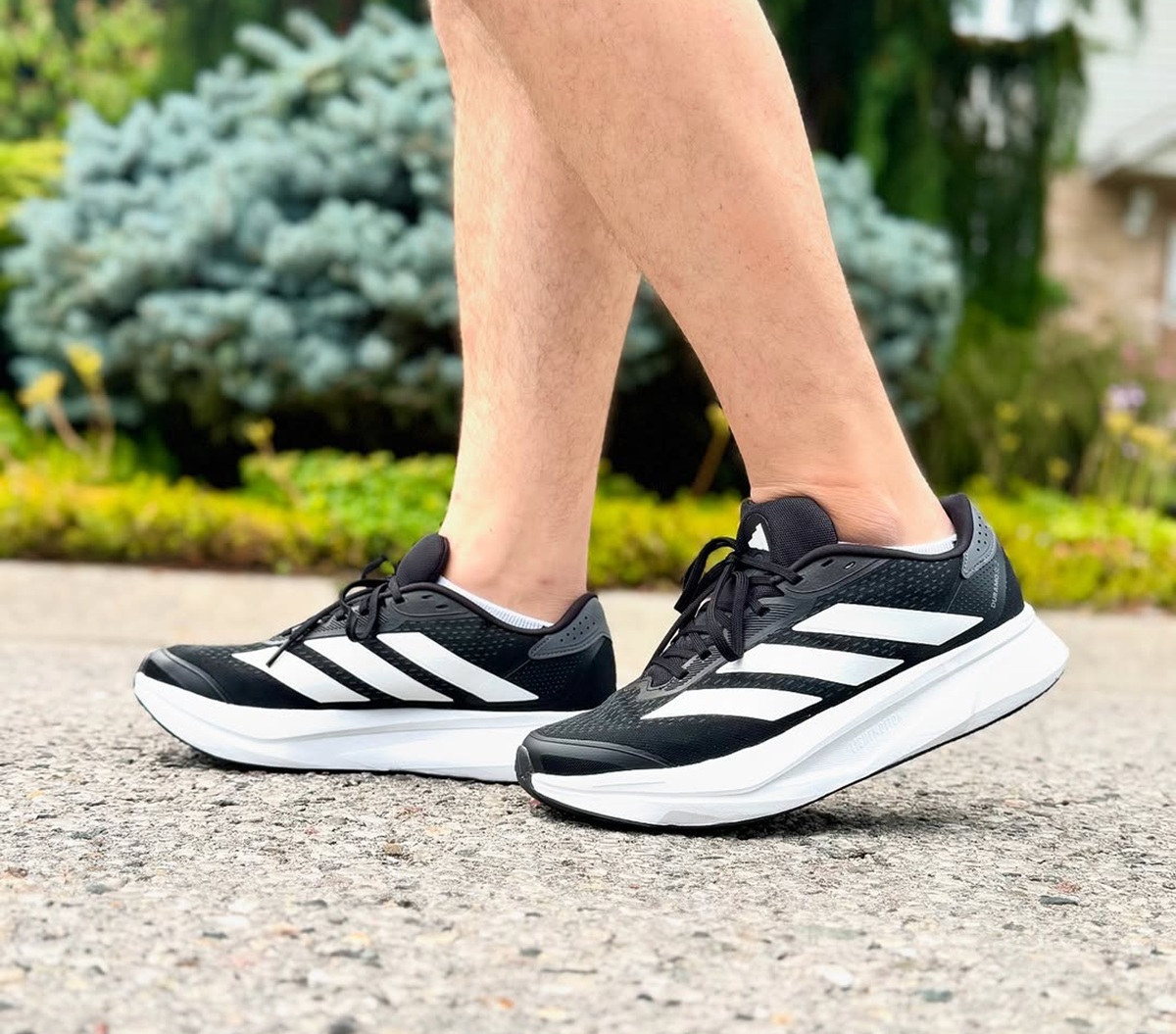
It’s durable outsole made from Adiwear materials will grip whatever terrain you’re running on, especially pavement and track.
- Weight: 8.7 oz Women’s, 10.3 oz Men’s
- Heel drop: 8 mm
- Available in 5 colors
- Not available in wide
- Available from Adidas.com for $70
Neutral Running Shoe
👉Asics Novablast 5
The Novablast has been a winning max cushion shoe from Asics since it first launched and they have continued to increase the amount of cushion in the shoe, while working to drop the weight. It’s not going to be the plush shoe you’ll see below, but it’s a great amount of cushion in a weight that’s going to translate to a lot of miles for the average runner from training even to race day.
The 5 has a completely new full length midsole with their FF Blast Max foam. Again, I like that this shoe is a more responsive cushion and you don’t sink in to it so much.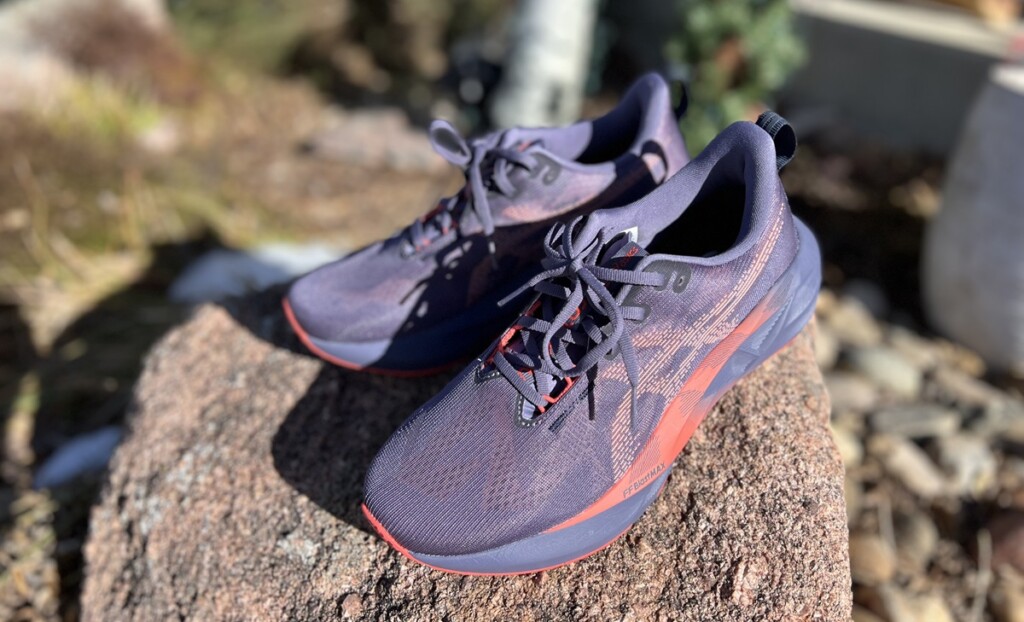
While this is a neutral shoe, with no guiderails or anything for stability, it absolutely has some of that built in to the design. The width of the platform from toe to heel reduces pronation and provides a really good ride.
- Heel toe drop: 8mm
- Weight: 7.9 oz women’s, 9.1 oz men’s
- Stack Height: 41.5mm
- Read my full review of the Asics Novablast 5 >>
- Available at RunningWarehouse.com $160 (my favorite for easy returns) and on Asics.com
👉Adidas Supernova Rise
If you already know that Adidas is a great fit for you then, you’re going to find the Supernova Rise is an everyday trainer that will get you through a lot of miles. While this is absolutely a great cushioned shoe, it’s not what I would consider a max cushion when comparing to other shoes on the market.
This is not a stability shoe, but can certainly help some with pronation.
they’ve included a new super foam called the Dreamstrike+ and second they’ve also added a Support Rod System. Technically the Supernova Solution (Coming 2024) will be the stability version of the Rise, but anytime we’re adding rods there’s some stability being implemented.

An option that would be good for those who want one shoe for daily training through speed sessions.
- Weight: 8.1 oz Women’s, 9.7 oz Men’s
- Heel drop: 10mm
- Not available in wide
- Available in 6 colors
- Available through Adidas and Zappos for $140
- Check out our full review of the Adidas Supernova Rise 2 here >>
Cushioned Running Shoe
👉ASICS GEL Nimbus
This shoe will appeal to most runners looking for a neutral fit and some MAX Cushion.
This is the plushest shoe in their line up with a great big old stack height and we’re here for it. The most recent model feels like a great update to a shoe that will carry a lot of runners over long miles with foam that’s durable and a fit that isn’t overly soft.
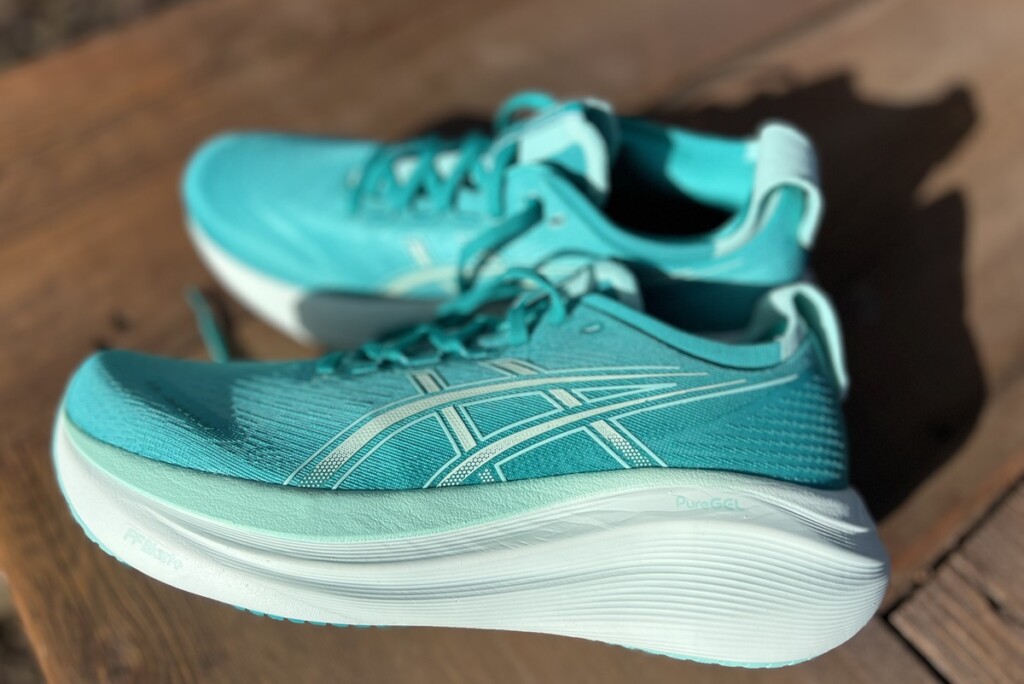 With the 42mm stack height, they did manage to retain a feeling of stability. The firmness that I wasn’t a huge fan of with the last one (because why should a max shoe feel firm) is gone and now it’s just a big cushioned ride. For me personally, I can’t say it’s a shoe I’d wear for anything other than easy runs. I certainly wouldn’t turn to it for tempo work or a race where a PR is the goal.
With the 42mm stack height, they did manage to retain a feeling of stability. The firmness that I wasn’t a huge fan of with the last one (because why should a max shoe feel firm) is gone and now it’s just a big cushioned ride. For me personally, I can’t say it’s a shoe I’d wear for anything other than easy runs. I certainly wouldn’t turn to it for tempo work or a race where a PR is the goal.
- Heel toe drop: 8mm
- Weight: 9.2 oz women’s, 10.7 oz men’s
- Available at Asics.com and RunningWarehouse.com $165
- Read our full review of the Nimbus
👉Adidas Evo SL
This is going to be the perfect shoe to carry you through long runs, while still allowing you to pick up the pace for half and even full marathon miles.
You’re not going to find all the fancy bells and whistles packed into the midsole, just some nice foam underfoot.
Lighstrike Pro is their top of the line foam. It’s the lightest with the best energy return and we’re finding it here in a $150 daily trainer, that’s fairly unusual.
The Adidas EVO SL is not as bouncy as a carbon plated shoe and not as soft as a daily trainer. It’s a blend right in the middle that allows for that energy return, but if you’re used to something like the Nimbus or NB 1080 that are super soft it could feel firm.
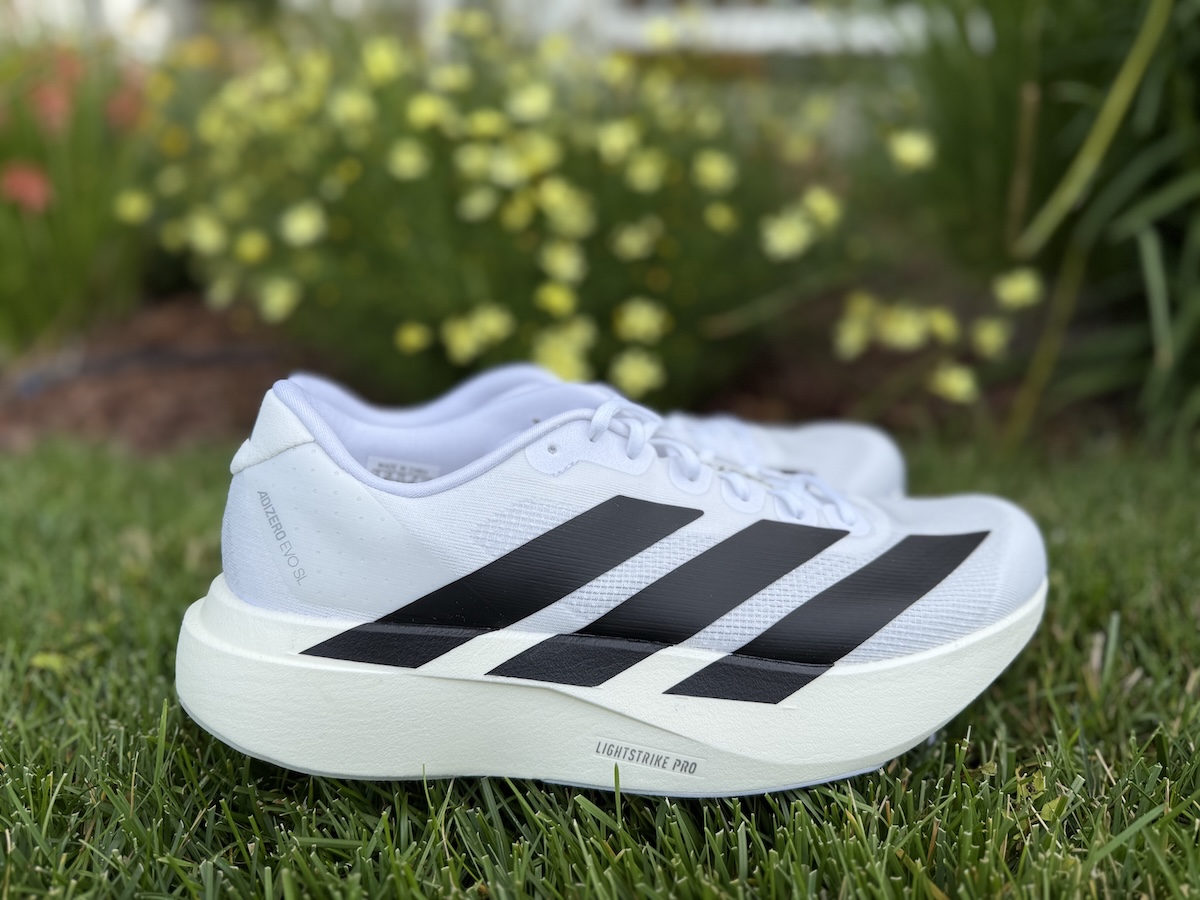
While we’re not reaching for this shoe on the days we want to do 7:00min repeats, we did enjoy it on longer miles where we wanted to put in some pick ups.
And in general, a lightweight shoe, with energy return on a long run is a really fabulous thing for the legs no matter the pace.
- Weight: 6.6 oz Women’s, 7.9 oz Men’s
- Heel drop: 6 mm
- Available in a whole lot of colors
- Available in wide
- Available now on adidas.com for $150
- Check out our full review of the Adidas Evo SL here >>
Carbon Fiber Plate Shoes
Are they cool new technology, yes. Do they last as long as your other shoes nope.
So if you want to test these out use them for speed work and then race day! I don’t usually do a full write up on these shoes, but with Adidas and Nike running shoes they’ve become a HUGE part of the brand.
👉Adidias Adizero Pro
This shoe is great for serious, efficient runners chasing PRs and racing fast marathons. It’s a serious price tag for a serious shoe that will absolutely benefit the front of the pack.
We thought that the ride feels comfortable underfoot with great forefoot pop, added bounce from the updated stack, and standout traction, making it the kind of shoe you save for race day when every second matters.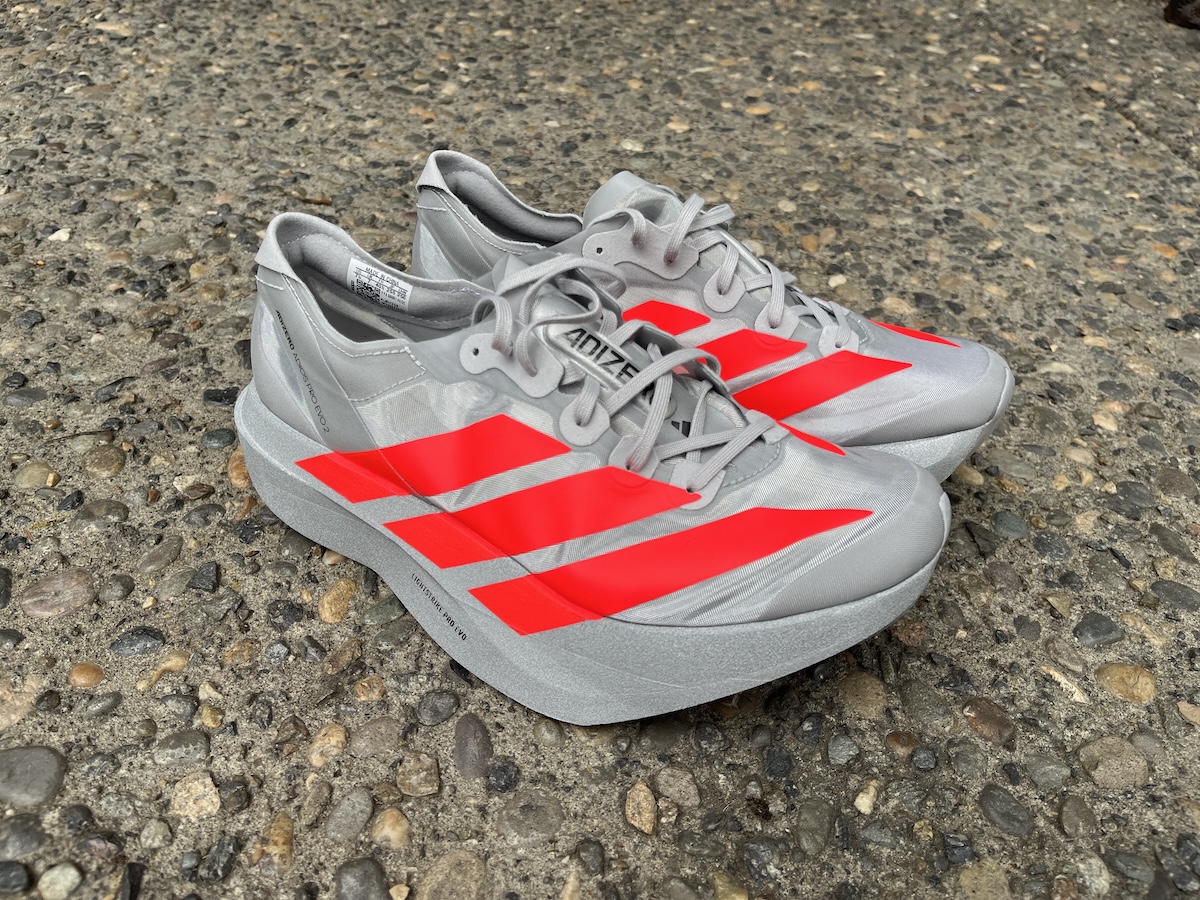
Overall, it’s a shoe that comes alive when you’re pushing the pace and rewards efficient, fast runners. You likely won’t feel the true benefits of this shoe at paces slower than 7 min/pace.
- Weight: 4.86 oz
- Heel Drop: 3 mm
- Limited launch colors (more colors coming Fall)
- Not available in wide
- Available from Adidas.com for $500 but is currently VERY HARD TO FIND
- Check out our full review of the Adidas Adizero Pro Evo here >>
👉 ASICS Metaspeed Sky and Edge
The Metasped Sky is a maximum cushioned carbon fiber plate for the marathon runner in you. It’s going to give you both that feeling of comfort over the miles along with the pop that’s often lost in a highly cushioned shoe.
We did find that like many carbon plated shoes it doesn’t feel super stable, so if you have any ankle issues or need that wider base probably not a good fit. It’s also most ideal for the front of the pack forefoot to midfoot strikers.
It’s not a back of the pack speed shoe, you won’t get the benefits because your gait is different.
- Weight: 5.8 oz Unisex sizing
- Heel drop: 5 mm
- 4 colors
- Not available in wide
- Available from Asics.com for $250
- Read our guide to understand the Asics Metaspeed Sky vs Edge
Adidas vs ASICS Running Shoe Feature Comparison
Both brands have been around for a very long time and are leaders in running shoe design. They both offer various technologies to aid with comfort, support, stability, and cushion.
They differ in both fit and technology.
Here is a breakdown of each shoe based on the components buyers need to consider when purchasing a running shoe.
It’s gonna get a little TECHY…so you can just skip on down to the specific model comparison if you want, but personally if I’m shelling out $150 for shoes, I kinda want to know why.
Durability
The lifespan of shoes from both companies is fairly comparable. Though I kind of dislike that they give a 200 mile range, that’s massive. Assume that for heavier runners shoes breakdown faster and those running on the treadmill may get more life.
- Adidas shoes have a life expectancy ranging from 300 to 500 miles, or three to six months, depending on your monthly mileage.
- ASICS recommends swapping out for new shoes every 450 to 500 miles.
Determining when to replace running shoes, of course, all depends on your gait, weight, and whether you run mostly on trail or road.
Shoe Fit
ASICS shoes have a more snug fit, particularly in the heel and midfoot. Though still not as narrow as Nike. An external heel clutch delivers targeted fit and support, while the Gel technology allows for foot movement in various directions as the foot transitions, reducing heel strike.
They do have some wide models, but the average shoe is going to be a little slimmer fit. Which also means they do not have a large toe box like an Altra Running shoe.
While ASICS also features a shoe fit guide, it takes a little sleuthing to find (you’re welcome).
Adidas shoes are generally reported to run true to size. I would say they often run a bit more narrow. And they rarely offer wide widths.
 This is an older, yet still very USEFUL graphic from the Huffington Post.
This is an older, yet still very USEFUL graphic from the Huffington Post.
I forget we may not all know the lingo when talking about different components of the shoe and why they matter.
Cushioning
Adidas is now well known for their Boost cushioning, which is in the name of so many shoes. Their goal was to improve upon traditional EVA foam, by creating something that provided both cushion and responsiveness.
Meaning that you don’t sink in to the shoe losing the forward momentum. Since 2013 Boost foam has been their primary cushion.

ASICS uses Flytefoam technology that provides bounceback and responsiveness with each step. It gives a bit less energy return than say Brooks shoes, but the two technologies are fairly similar.
The company has been using their famous Gel technology for more than 30 years. It works well to absorb the shock with each step.
Stability Shoe Features
Adidas utilizes a denser midsole and more heel lock to help keep your foot from overpronating.
ASICS still has a more traditional stability shoe structure. They provide stability through a dual density midsole system called Duomax, which enhances support and stability. That, along with the external heel clutch allow the foot to continue its natural movement while running.
As you may know, I’m not a huge fan of stability shoes for most runners. I am not finding a big difference in brands, they are all focused on preventing that foot roll and often feel more rigid, even with a decent cushion.
Affordability
The prices between the two brands are fairly comparable.
- ASICS prices range between $110 to $160
- Adidas prices range from $120 to $160
The most popular models for both brands are priced toward the higher range. Carbon fiber shoes and often trail shoes will go beyond those rates, like the Adidas Pro which is over $300.
You’ll notice that every brand offers a range and this is indeed due to a difference in technology and where they sell the shoe. They know that the big box store can sell the shoe with less in it, while the local running store needs to be best for dedicated runners.
How to Choose ASICS or Adidas?
ASICS and Adidas are two extremely well known running shoe brands, but more important than brand is the fit of the shoe.
Your gait and feet will change over time and you may need to change shoes.
This is also why I recommend rotating through several pairs of shoes at once.
And remember, just because these are two of the most well known brands on the market, there are still plenty of other shoe brands to select from if neither New Balance nor Nike has the right shoe for you.
Keep in mind that shoe design can change, even with the same model, so always assess how the shoe fits every time you replace a pair.
For more help selecting the right shoe for you, don’t worry, I’ve got you:
- Best Trail Running Shoes
- Top 7 Marathon Running Shoes
- Asics vs HOKA
- ASICS vs Brooks
- Best On Running Shoes
Other ways to connect with Amanda
Instagram Daily Fun: RunToTheFinish
Facebook Community Chatter: RunToTheFinish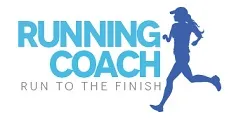
Sign Up to Receive a Weekly Newsletter with Top Running Tips and Laughs
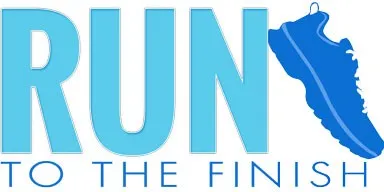


 Brooks Adrenaline GTS 25 Review | Lower Drop, More Cushion, Same Stability
Brooks Adrenaline GTS 25 Review | Lower Drop, More Cushion, Same Stability
Leave a Reply